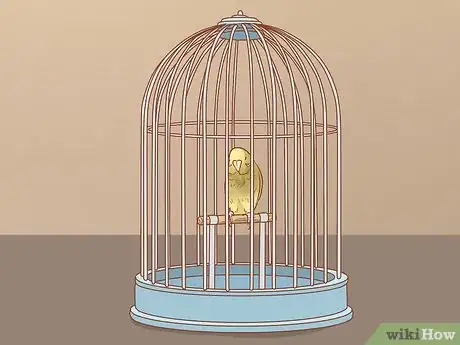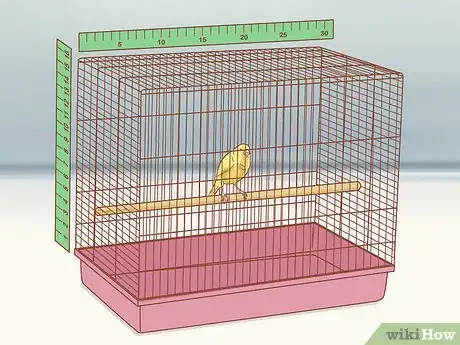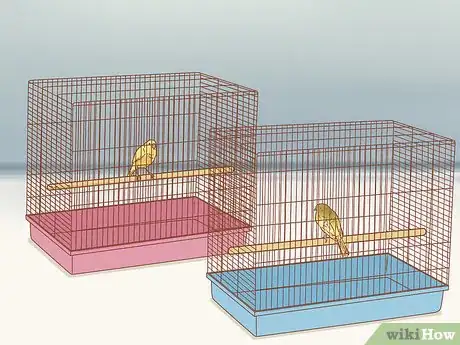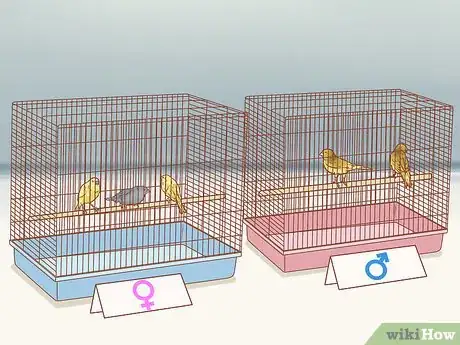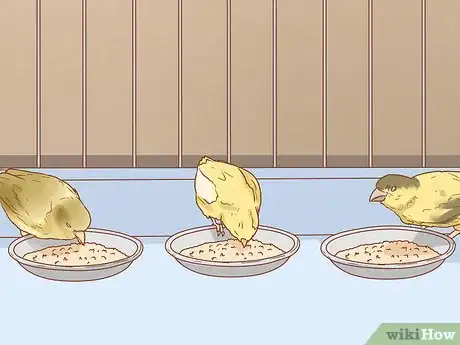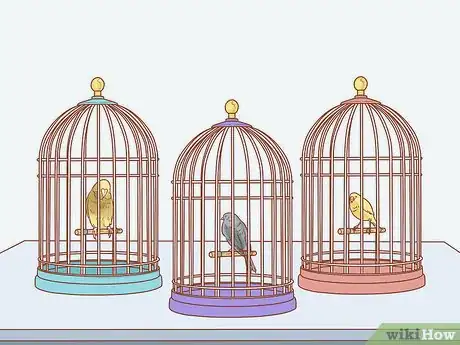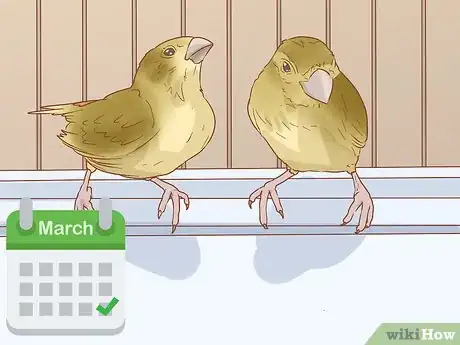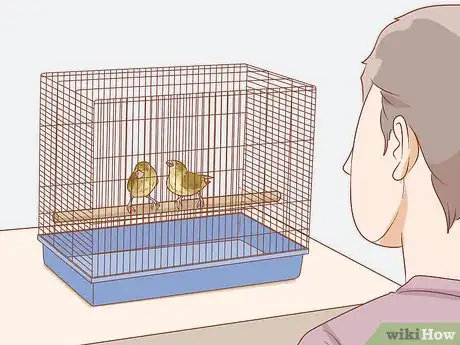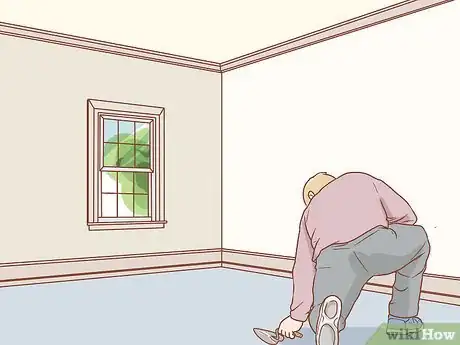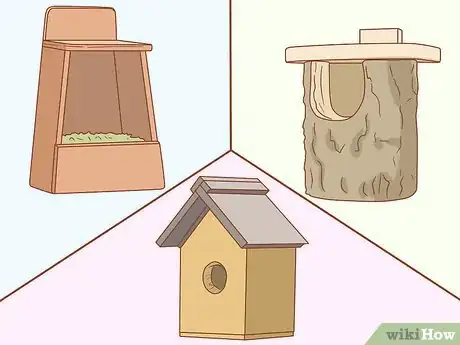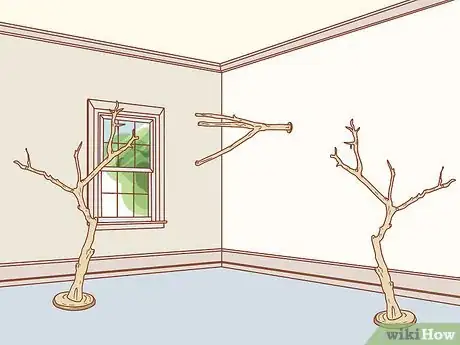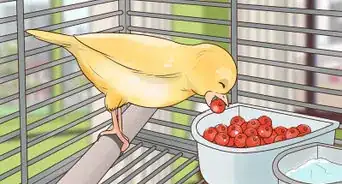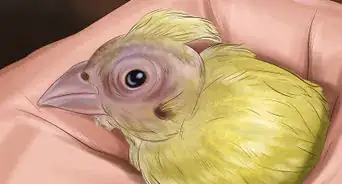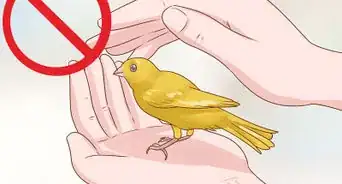This article was co-authored by Deanne Pawlisch, CVT, MA. Deanne Pawlisch is a Certified Veterinary Technician, who does corporate training for veterinary practices and has taught at the NAVTA-approved Veterinary Assistant Program at the Harper College in Illinois and in 2011 was elected to the board of the Veterinary Emergency and Critical Care Foundation. Deanne has been a Board Member of the Veterinary Emergency and Critical Care Foundation in San Antonio, Texas since 2011. She holds a BS in Anthropology from Loyola University and an MA in Anthropology from Northern Illinois University.
There are 13 references cited in this article, which can be found at the bottom of the page.
This article has been viewed 57,270 times.
Canaries are typically solitary birds, but this does not mean that you have to keep just one! If you want to fill your home with a sweet chorus of canaries, you should decide whether you are keeping them in cages or in a large aviary. If you have cages, you should strongly consider keeping the birds separated, although you may be able to keep birds together in one cage for part of the year. In aviaries, multiple birds can live together in peace, although you will need lots of space and plenty of food.
Steps
Separating Canaries in Cages
-
1Quarantine new birds. Even if kept in separate cages, new birds can spread disease. For the first six weeks after bringing them home, keep new birds in a separate cage in a different room away from the rest of the birds. This will prevent the spread of disease or parasites.
-
2Get one cage for each canary. Canaries can be extremely territorial over small spaces, and they are often happier living alone than with other canaries. They will each need their own cage with separate food bowls, water dishes, and perches.[1]
- The best cage for a canary is a rectangular cage that is 16 inches (41 cm) tall and 30 inches (76 cm) wide. Do not use round cages.
- Canaries should have at least two perches at either end of their cage. Each perch should have a different width.
- Canaries may enjoy having a swing in their cage or toys like vine balls or bells.
Advertisement -
3Place cages near one another. As long as all the birds are healthy, you can place the cages in the same room. If the birds don't fight through the bars, you can put their cages next to one another.[2]
- Males may sing more than usual if kept in cages next to one another.
- Keep all cages away from windows, doors, and air vents or anywhere there is a draft.
- Do not place the cages in the kitchen or in rooms where air fresheners, scented candles, or aerosol sprays are used.
Moving Canaries in Together
-
1Determine their gender. Learning the gender of each canary will tell you if they can share a cage or not. Unfortunately, male and female canaries do not have any external differences. There are a few methods to check their gender, however.[3]
- Use a DNA sexing technique. Ask your vet to recommend you to a lab or go online to see what organizations offer this service. This is typically an inexpensive option.
- You can get an ultrasound test at the vet, but this can be expensive.
- If the bird sings, you can be fairly certain it is a male. Very few females sing. Most will chirp.
- If you have baby birds, try tapping the nest. Female birds tend to look at you while male birds will bend their heads and stick their rears up in the air.
-
2Separate by gender outside of breeding season. Canaries can fight for many reasons, but competition over mating is one of the biggest causes. To reduce the tension, keep the males in one cage and females in another after their first molt in late summer.[4]
- Use caution when putting males in a cage together. While some males are able to live peacefully together outside of breeding season, others may still attack, and can often kill each other.[5]
-
3Feed the birds all at once. Each bird in the cage will need their own food dish. Otherwise, more dominant birds may prevent less dominant birds from eating. To make sure that no fights erupt over food, make sure to feed all of the canaries in the same cage at the same time.[6]
- Each canary needs about a teaspoon of seed or pellet mix. Fresh veggies like kale, broccoli, grapes, or apples can round out their diet.
-
4Separate birds before breeding season starts. Occasionally, canaries of the same sex can be kept in the same cage after the first molt in summer until roughly midwinter. During the beginning of the year, they may start to fight and attack one another again. If they do, you should move them back to separate cages.[7]
- It is a good idea to have your separate cages ready in case the birds start to fight. This can make the transition from the group cage to the single cage much easier.
-
5Move mating pairs to breeding cages in late March. The breeding season typically begins in the later half of March.[8] Get a breeding cage with both a solid and a wire partition in it. Put each bird on different sides of the partitions in the cage.[9]
- Remove the solid partition when the female starts building her nest. Once the two birds start kissing through the wire, you can remove the wire one as well.
- Once the birds start to molt, breeding season is over, and they can go back to their gendered cages.
-
6Supervise them carefully. Some canaries may learn to live well with each other, but it is difficult to predict which ones will be at peace and which will start fights. When you first move the canaries in, keep an eye on them to make sure that they do not squabble over space. Canaries can sometimes kill each other, so watch them carefully.
- If the canaries fight, they need to be kept in separate cages.
Starting an Aviary of Canaries
-
1Build an outdoor aviary. If you have space outside, you can make a beautiful outdoor aviary to keep your canaries in. These aviaries will supply plenty of room for your birds, reducing the chance that territorial fights will break out.[10]
- You should have about 5 inches (13 cm) of space per bird. So an aviary that is 60 inches (150 cm) long can accommodate twelve canaries.
- You should aim to have at least three or four males at the beginning. They will be less likely to fight with each other than two males.
-
2Transform a spare room into a bird room. An alternative to the outdoor aviary is to have a room devoted in your home to the birds. This should be a spare room with no furniture. The windows and doors should be sturdy so that the canaries do not escape.[11]
- Pick a room with plenty of natural light or even a skylight. You can install special full spectrum bird lamps if necessary.
- Tile or concrete are the best type of flooring as they are the easiest to clean. You can line the floor with paper towels to help.
- As with aviaries, you will need at least 5 inches (13 cm) of space per bird. Most indoor rooms should be able to accommodate a large number of canaries.
-
3Install a few seed dispensers. Your aviary should have at least three food and water stations to prevent fights. A large seed dispenser or bird feeder works well to keep the canaries fed and happy. You can also place a few heavy water dishes in the aviary for them to drink and bathe in, though these should only be left in for short periods of time.[12]
- Seed dispensers will dispense seed and pellet mix slowly over time. You can fill these up to the top, and refill when they get low, typically once every few days or week.
-
4Put in enough nest boxes for each hen. During breeding season, hens will fight over nesting boxes to lay their eggs in. If you make sure that there are enough nesting boxes, they will not need to fight as much over one.[13]
- Even if you have more than enough nest boxes, there is a chance that two hens may still fight over one box. Since there is more space in aviaries, these arguments will generally sort themselves out. Do not separate them into cages unless you feel that your canaries are in danger.
-
5Add enough perches for all birds. Canaries love having perches as high in the aviary as possible, and they may start fighting for the best one. To solve this problem, keep enough perches for each canary. Place them up high in the aviary.[14]
- Similarly, you may want to keep a large supply of toys in the aviary, such as vine balls, bells, branches, and swings. Try to place these in different places around the aviary to avoid fights over territory.
-
6Add in other small species of birds. Canaries can live well with other species of finches, such as the star finch, and smaller, non-aggressive birds. Never add in larger birds, such as parrots, or aggressive species, such as budgies, to an aviary with canaries.[15]
- If you want to mix canaries with other birds, you will need an aviary that is at least 4 feet (1.2 m) wide so that all the birds can have their own space.
References
- ↑ https://www.beautyofbirds.com/canaryinfo.html
- ↑ https://www.beautyofbirds.com/canaryinfo.html
- ↑ https://www.beautyofbirds.com/sexingcanaries.html
- ↑ https://www.beautyofbirds.com/canaryinfo.html
- ↑ http://petcaretips.net/can-canary-share-cages.html
- ↑ https://vcahospitals.com/know-your-pet/canaries-feeding
- ↑ http://petcaretips.net/can-canary-share-cages.html
- ↑ https://www.beautyofbirds.com/canarybreeding.html
- ↑ http://www.petcraft.com/articles/2014/10/30/canary-breeding-for-beginners/
- ↑ https://www.omlet.co.uk/guide/finches_and_canaries/aviaries_and_bird_rooms<
- ↑ http://blogs.thatpetplace.com/thatbirdblog/2010/03/09/the-bird-room-a-treat-for-birds-of-all-kinds-and-their-owners/#.WWjw04jys2w
- ↑ https://journals.tdl.org/watchbird/index.php/watchbird/article/view/1895
- ↑ https://journals.tdl.org/watchbird/index.php/watchbird/article/view/1895
- ↑ https://books.google.com/books?id=3mz7_pY2n7EC&lpg=PP1&dq=canary%20handbook&pg=PA28#v=onepage&q=aviary&f=false
- ↑ https://www.omlet.co.uk/guide/finches_and_canaries/keeping_pet_finches/keeping_birds_together
About This Article
If you want to keep multiple canaries, you can either keep them in separate cages, house them together for part of the year, or start an aviary if you have the space. During breeding season, birds should be kept in solitary cages, which occurs near the beginning of the year and lasts through spring. If you do want to keep birds in cages together, you can move them in together after the first molt in summer and leave them there until about midwinter. Keep reading to learn tips from our Veterinary co-author on how to build a canary aviary!
